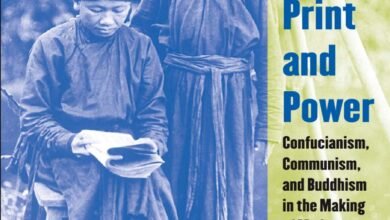
Rajkotupdates.News: Boost Trade with INR in India-Malaysia Deals
India and Malaysia have expanded their trade capabilities to include transactions in Indian Rupee (INR). This move allows for more flexibility in bilateral trade beyond conventional currency options.
Rajkotupdates. News reports a significant development in international trade relations between India and Malaysia, marking a move toward diversification in trade currencies. Traditionally, countries have relied on dominant currencies like the US dollar for international transactions. Still, this decision paves the way for a more localized trading mechanism, potentially reducing exchange rate risks and transaction costs.
The inclusion of the Indian Rupee in trade dealings presents new opportunities for businesses and strengthens economic ties between the two nations. This strategic collaboration demonstrates an ongoing shift in global trade dynamics and underlines the increasing influence of the Indian economy. It also encourages other countries to consider similar arrangements, which could lead to a broader acceptance of the INR on the global market.
Contents
- 1 Rajkotupdates. News Spotlight On Indian Rupee In International Trade
- 2 Historical Trade Dynamics Between India And Malaysia
- 3 Benefits Of Trade In Local Currencies
- 4 Current India-Malaysia Trade Scenario
- 5 Mechanics Of Trade With Inr
- 6 Challenges And Opportunities
- 7 Sector-specific Impact And Analysis
- 8 Future Of India-Malaysia Economic Relations
- 9 Expert Perspectives
- 10 Case Studies: Successful Inr Trade Deals
- 11 Conclusion
Rajkotupdates. News Spotlight On Indian Rupee In International Trade

Rajkotupdates.The news brings to light a milestone development for the Indian Rupee (INR). India and Malaysia have taken a remarkable step in international trade. These nations have agreed to transact using INR alongside other currencies. This move signifies the growing importance of the Rupee in global markets.
Growing Role Of Inr In India’s Foreign Trade
The Indian Rupee is climbing new heights in global trade. India’s economic reach extends as more countries recognize INR for transactions. India’s trade activities continue to surge, raising INR’s profile internationally.
- Greater Flexibility: Traders enjoy enhanced ease and lower costs.
- Reduced Dependence: Reduced reliance on established foreign currencies.
- Strengthened Economy: A robust Rupee signifies a solid national economy.
Recent Shifts In India-Malaysia Economic Relationships
India and Malaysia rewrite trade scripts. The two nations embrace INR-based transactions. This agreement reflects deepened economic ties and mutual trust.
| Year | Trade Volume | Currency Used |
| Previous Years | High | USD, MYR |
| Current Agreement | Set to increase | INR, MYR |
Historical Trade Dynamics Between India And Malaysia
India and Malaysia share a rich trade history that dates back centuries. These two nations have built solid economic bridges over time. Let’s examine the traditional trade patterns and the impact of the Indian Rupee on past deals.
Traditional Trade Patterns
The trade relationship between India and Malaysia has been vibrant, with various goods exchanged. Historically, the trade consisted mainly of spices, textiles, and precious stones. The spice route was crucial, with India’s pepper and cardamom highly valued in Malaysia. Textiles like cotton and silk were other essential trade elements.
- Spices: A mainstay of the ancient trade routes.
- Textiles: Indian silk and cotton were treasured in Malaysian markets.
- Precious stones: They found a special place in the cultural exchanges.
Influence Of Inr In Past Deals
The Indian Rupee (INR) has played a limited role in historic bilateral trades. Barter systems were standard until modern currency became widespread. The INR often backed trade goods’ value when it entered the equation.
In the past, Malaysia traded its local products like rubber and tin, and India offered items including jute and tea. Although INR was not as common as other global currencies, it served as a potential medium for value exchange.
| Malaysia’s Exports | India’s Exports | Role of INR |
| Rubber, Tin | Jute, Tea | Limited, but significant when used |
Benefits Of Trade In Local Currencies
Trading in local currencies has a lot to offer. It’s not just about easing transactions. It can shape economies. Now, India and Malaysia have chosen this path. They will use rupees for trade. Here’s why this matters.
Reducing Dependency On USD
Local currencies free trade from the dollar’s hold. This has big perks:
- Lower costs: No need to convert to dollars. This cuts trade costs.
- Less risk: Trade gets safer. Firms avoid dollar fluctuation risks.
Strengthening Economic Sovereignty
Countries gain control over their trade. They don’t lean on the dollar. This boosts their economic power. Here are the wins:
- More power: Nations steer their economic policies.
- Better stability: Local currency use can make markets more stable.
Current India-Malaysia Trade Scenario
India and Malaysia share a vibrant economic bond. Malaysia ranks among India’s top trading partners. Goods flow seamlessly between the two nations, encompassing various industries. This partnership marks a significant contribution to both economies.
The exchange embodies diversity, from electronics to palm oil. India imports a multitude of products, including vegetable oils, electronics, and machinery. Conversely, it exports items such as petroleum products and meat to Malaysia.
Bilateral Trade Agreements
India and Malaysia have established several agreements to bolster trade. These include the Comprehensive Economic Cooperation Agreement (CECA) and many other pacts. These agreements aim to reduce barriers and promote mutual economic growth.
- Enhanced cooperation in services and investments
- Improved market access for goods
- Encouragement of bilateral business opportunities
Impact of Based Trade On Businesses
Integrating the Indian Rupee (INR) into Malaysian trade means significant changes. Businesses stand to benefit from reduced currency exchange risks. Local currency trade can spur investment and strengthen financial stability.
| Benefits of INR-Based Trade | Impact on Businesses |
| Lower transaction costs | Increased profits |
| Diminished foreign exchange risk | Enhanced predictability in finances |
| Strengthened economic ties | Better cross-border trade efficiency |
Mechanics Of Trade With Inr
In a groundbreaking development, India and Malaysia have agreed to enable trading with the Indian Rupee (INR), creating new dynamics in international transactions. This move paves the way for enhanced trade flexibility, bolstering trade relationships. Businesses and financial agents on both sides stand to benefit as they navigate the ‘Mechanics of Trade with INR’. Let’s explore the two critical components that make this possible: currency exchange mechanisms and settlement processes.
Understanding Currency Exchange Mechanisms
Grasping the fundamental aspects of currency exchange is essential for traders and businesses. When India trades with Malaysia using INR, the process simplifies. There’s no need to convert to a third currency like the USD, which traditionally dominates international trade. Such a mechanism offers multiple benefits:
- Reduced transaction costs: Bypassing dollar conversion cuts down on expenses.
- Shorter transaction timelines: Direct exchanges mean faster settlements.
- Favourable exchange rates: Trading INR may provide more stable rates against the Malaysian Ringgit.
- Local currency reinforcement: It boosts the use of the INR in the global market.
Settlement Processes In Inr Deals
For successful INR transactions, understanding the settlement process is vital. Here’s how it works:
- Indian exporters invoice their goods and services in INR.
- Malaysian importers make payments in INR to their local bank.
- The Malaysian bank coordinates with an Indian financial institution.
- Funds are transferred to the Indian exporter’s account.
Such straightforward mechanisms eliminate the complexity involved in cross-border settlements.
| Step | Action | Benefit |
| 1 | Invoice in INR | Clarity in pricing and cost-effective |
| 2 | Payment to a local bank | Convenience and local support |
| 3 | Bank coordination | Seamless currency transition |
| 4 | Transfer to exporter | Timely receipt of funds |
Challenges And Opportunities
The groundbreaking move for India and Malaysia to engage in trade using the Indian Rupee (INR) symbolizes a pivotal shift in the economic dynamics of Asia. This strategic decision brings forth challenges and opportunities for traders and businesses.
Foreign exchange (Forex) markets are known for their turbulence. Businesses must now become skilled in managing the unpredictability of the INR.
Here are the key challenges facing market participants:
- Understanding the regulatory frameworks that govern the INR.
- Developing mechanisms to cushion against sudden currency fluctuations.
- Establishing accurate forecasting models for effective decision-making.
However, new opportunities also emerge:
- Cost reduction on currency conversion that benefits both countries.
- Stronger trade relations lead to better economic stability.
- The opening of new markets for investors keen on diversifying assets.
Expanding Market Reach
Adopting the INR in international trade can open doors for broader market access.
Challenges to consider:
- I was finding reliable partners to establish trade within the new currency domain.
- We are aligning product and service offerings to meet the needs of a diverse market.
- I am gaining insights into local consumer behaviour and procurement logistics.
Despite these challenges, the benefits are clear:
- Broadening the customer base across different geographies.
- Leveraging trade agreements to cater to a broader audience.
- Enhancing brand presence in the global marketplace.
Sector-specific Impact And Analysis
Exciting news has unfolded in the trade corridors between India and Malaysia. Both nations can now conduct transactions in the Indian Rupee (INR). Let’s delve into the effects this will have on different sectors.
The recent introduction of INR for trade opens myriad doors. Specific sectors stand to gain significantly. We will explore them below.
Textiles And Electronics
The impact on the textile and electronics sectors is noteworthy. Indian textiles, renowned for their quality and variety, may see a price advantage. Electronic goods from Malaysia can now be purchased in INR, potentially streamlining the import process. Below is an analysis of both industries:
| Textiles | Electronics |
| Cost efficiency with INR trade | Smoothened import of Malaysian electronics |
| Better competitive edge in ASEAN markets | Enhanced market penetration in India |
| Reduced dependency on other currencies | Potential for joint venture initiatives |
Agriculture And Pharmaceuticals
India and Malaysia have strong footholds in both agriculture and pharmaceuticals. The use of INR as a trade currency could be a game-changer.
- It enhanced export opportunities for Indian farmers and producers.
- Streamlined processes could lead to more robust trade in agricultural commodities.
- Increased access to Malaysian pharmaceuticals could benefit the Indian consumer.
- Cost savings in currency exchange encourage pharmaceutical research collaborations.
In summary, tangible benefits will ripple in the agriculture and pharmaceutical sectors. This change could herald a new era of bilateral trade primed for growth and innovation.
Future Of India-Malaysia Economic Relations
India and Malaysia stand at a promising juncture. The possibility of trade in the Indian Rupee (INR) paves a new pathway. This move strengthens ties, contributes to economic growth, and benefits both nations.
Predicted Trends In Inr Transactions
Economists predict an uptick in INR-based trade. This could lead to reduced dependency on other major currencies. Local businesses might see lower transaction costs. Cross-border trade could become more seamless.
- Increased use of INR for bilateral deals.
- Expansion of Indian investment in Malaysia.
- Stable exchange rates between INR and MYR.
Long-term Strategic Partnerships
Long-lasting economic alliances are anticipated, which will foster mutual growth. Sectors such as technology, education, and healthcare show promise. A joint commitment to innovation and development marks the road ahead.
| Sector | Impact |
| Technology | Boost in digital collaboration. |
| Education | Increased student and faculty exchange programs. |
| Healthcare | Joint research initiatives. |
Expert Perspectives
The announcement that India and Malaysia will engage in trade using the Indian Rupee (INR) marks a significant milestone. This blog post delves into the reactions of economics and business professionals. Their insights shed light on this strategic move’s impact on international and cross-border trade relations.
Economists On Inr Internationalization
Economists nationwide are buzzing with optimism about the INR’s internationalization. Trade transactions in INR signal a decisive vote of confidence. They dictate several benefits, which include:
- Lower transaction costs for Indian businesses
- Enhanced stability against currency fluctuations
- Boosted autonomy in foreign trade policies
This strategic move could reshape India’s global economic footprint. Experts believe it will pave the way for increased trade partnerships.
Business Leaders On Cross-border Trade
The business community greeted this update with a warm welcome. Leaders foresee a tide of change. Their perspectives highlight:
- Better market access in Malaysia for Indian goods
- Potential upswing in investment flows
- A rise in trade volume and economic cooperation
Business leaders also stress supply chain optimization. They see a future with improved bilateral trade agreements.
Case Studies: Successful Inr Trade Deals
The ‘Case Studies: Successful INR Trade Deals’ shed light on real stories from businesses that have embraced trade with India’s currency, the Indian Rupee (INR). This move to accept payments in INR has opened many opportunities for these enterprises, and they have some inspiring success tales to share.
Businesses Thriving With Inr Transactions
Several case studies highlight how trading in INR has propelled businesses to new heights. They have not only cut down on transaction costs but also easily tapped into the lucrative Indian market.
- Cost Savings: Reduced currency conversion charges.
- Access to Indian Consumers: Direct engagement with a vast customer base.
- Streamlined Processes: Simplification in trade and finance operations.
Learning From Trade Pioneers
Eager companies can learn much from early adopters of INR trading. These pioneers have strategically navigated the market, benefiting from their foresight in currency choice.
- Study the market to understand the demand for your goods in India.
- Form partnerships with Indian companies to ease market entry.
- Utilize INR-based transactions to gain a competitive edge.
Conclusion
The recent move enabling India-Malaysia trade in INR is a significant milestone. It unveils new economic synergies and enhances bilateral trade flexibility. Both nations demonstrate a commitment to fostering stronger commercial ties by adopting local currencies for transactions. This strategic development paves the way for a more interconnected and resilient Asian economy.



